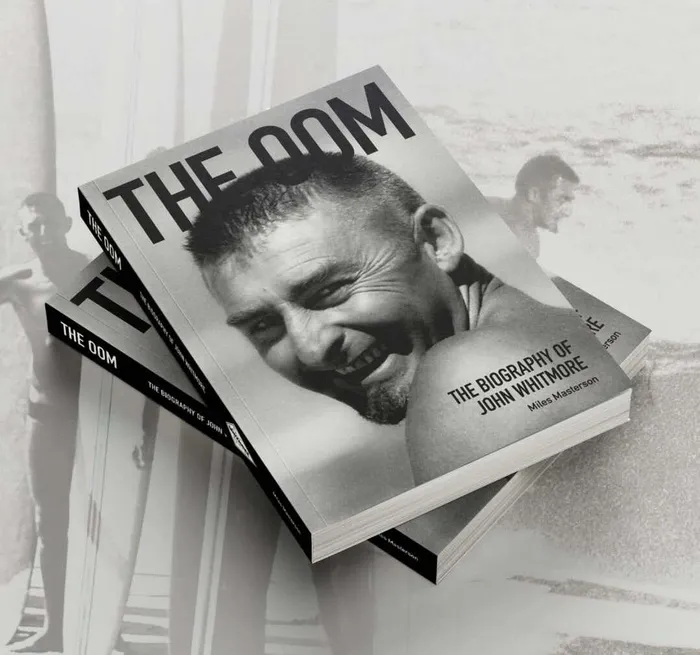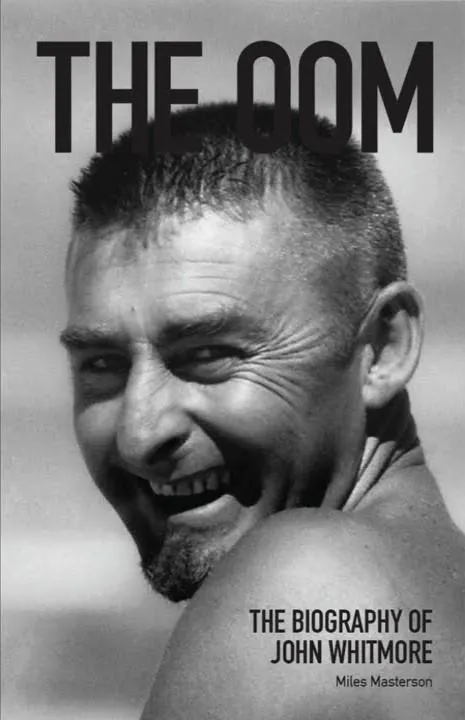South African surfing pioneer John Whitmore gets the biography he deserves

South African surfing pioneer John Whitmore has finally received the biography that captures his life and legacy in full.
Image: Supplied
John Whitmore is remembered as the pioneer of surfing in South Africa, a man whose influence shaped the sport for generations.
Author Miles Masterson has captured Whitmore’s life in the self-published biography “The Oom”, tracing the journey of the man who discovered iconic surf spots such as Elands Bay, Jeffreys Bay and Bruce’s Beauties, and who introduced Hobie Cats and modern surfboards to South Africa.
Whitmore also connected with California’s “Dana Point Mafia” in the 1960s and played a role in inspiring Bruce Brown's "The Endless Summer”.
Masterson, who grew up on the Atlantic Seaboard and began surfing at Hout Bay in 1979, holds vivid memories of Whitmore’s influence throughout his early years of surfing.
“We used to listen to his surf report on Good Hope FM before school,” he recalled.
“Later, at Camps Bay High School, we would sometimes see him in Camps Bay and talk about it for hours. John Whitmore was like a god to us grommets. The older surfers passed down stories of his accomplishments like folklore and fables.”
Masterson also became a competitive surfer, earning Western Province colours on several occasions, and knew Whitmore’s youngest daughter, Sian, from high school.
The idea to write the biography came in 2008, when The Surfer’s Journal commissioned Masterson to write an 18-page feature on Whitmore.

Author Miles Masterson has ensured that John Whitmore’s remarkable life is properly recorded in "The Oom".
Image: Supplied
Sian Whitmore mentioned that journalist Tony Heard had once considered writing a biography but was too busy.
“That sowed the seed in my mind,” said Masterson.
“I had just published my first book, ‘How To Surf’, and have always aspired to write several books. I realised that this was a book I really wanted to read, so I expanded my research from a magazine feature to a full biography on John, who brought California beach culture to South Africa.”
Masterson’s interest in surfing and South African history shaped the project.
“I have always loved history and reading,” he said.
“As a lifelong recreational and competitive surfer, I have a keen interest in the sport’s history. I have worked in the surf industry for more than a decade. John and a few others founded this culture in South Africa in the early 1960s.”
He noted that despite SA’s prominence in surfing today, “the history of the sport has never been properly documented. Lesser surfing nations like the UK or Japan have dozens of books."
"Documenting South African surfing history through John’s lens was essential. Several of the 120 people I interviewed for the book have passed away since, but their stories are preserved on my computer.”
Masterson was struck by the breadth of Whitmore’s accomplishments.
“I knew he was influential, but I did not know the full extent. He helped found six water sports: skin diving, spear fishing, open ocean swimming, surfing, Hobie Cat sailing and bodyboarding."
"He was also a businessman, administrator, painter, carpenter, sculptor, knife maker and a family man. He battled apartheid sports boycotts to develop Springbok surfing and later founded and championed Hobie Cat sailing in SA.”
Whitmore’s impact on surfing is profound.
“He made the first modern surfboards in South Africa in the 1960s, with attention to detail that still influences shapers today. He founded Springbok Surfing, worked to develop world-class surfers and laid the foundations for the South African Surfriders Association."
"His efforts eventually led to the multiracial Surfing South Africa, established in 1994, and enabled surfers like Michael February to emerge.”

South African surfing pioneer John Whitmore has finally received the biography that captures his life and legacy in full.
Image: Supplied
The book also explores Whitmore’s connection to “The Endless Summer”.
“John’s discovery of surf in St Francis in the late 1950s led directly to Bruce Brown filming there in 1963. The segment featuring Bruce’s Beauties is one of the most iconic in surf cinema."
"It spurred global tourism and surf travel to SA for decades. The connection was made by Dick Metz, who introduced John to the modern surfing world and the Dana Point Mafia.”
Research for the book required navigating conflicting accounts.
“I often heard three or four versions of events, some contradictory. Accessing John’s scrapbooks, Cape archives, national libraries and online resources helped me build a coherent narrative. Writing the book was a sideline passion project for over ten years. Dick Metz’s encouragement was instrumental.”
Masterson had personal connections that aided his research.
“I knew many people close to John, including his nephew Johnny Paarman and Hobie Cat world champion Shaun Ferry. Meeting people like Derek Kershaw, a paraplegic Hobie Catter who worked for John, was extraordinary. An unintended benefit of this project was reconnecting people who had not seen each other in decades.”
“The book is essential reading for South African surfers,” Masterson said.
“It documents our early history and collective identity. Young surfers and surfers of colour can learn how the sport evolved under apartheid."
"Beyond surfers, water sports enthusiasts and anyone interested in South African history or biographies will find value in it. I aimed to craft a book accessible to a general audience, with adventure, personal drama and history woven together.”
Regarding Whitmore’s legacy, Masterson emphasised his mindset: “Life is for living. Do not hold back, explore, and live your dreams. What you put in is what you get out, as John often said.”
While Masterson does not plan immediate follow-ups, he noted other South African surfing pioneers who deserve biographies, including Max Wetteland, Ahmed Collier, Shaun Tomson and Jordy Smith.
“This has been a passion project. It required self-publishing because no established publisher would back it, but it has been rewarding. The reception has been incredible, and John finally has the biography he deserves.”
Related Topics: